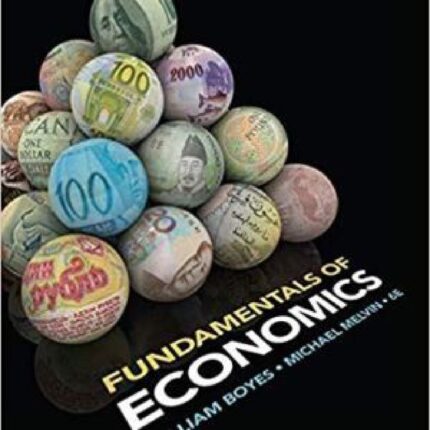1 ) What are the major characteristics of monopoly? Answer: A monopolist is the only seller of a product for which there are no close substitutes. To
maintain this position as the sole seller of a unique product, there must be barriers to entry.
Also, the monopolist has “price making” power because the monopolist i s the industry and supplies the entire market for the product. Given a down-sloping demand for the product, the
monopolist must decrease price to increase quantity sold. Finally, advertising under
monopoly often depends on the nature of the product and whether the monopolist feels there
is a need to increase demand for the product. 2 ) What are the major barriers to entry that explain the existence of monopoly? Answer: There are at least four types of entry barriers that create the conditions for monopoly. First,
economies of scale mean that in some industries large-scale production is necessary to
achieve the most efficient level of production. In this case, the long-run average cost curve
will tend to decline over a wide range of output for a product. Either a few firms, or in the
extreme, one firm, will be necessary to provide market demand in the most efficient way. In
the extreme, there are natural monopolies that arise when competition between firms is
simply inefficient or impractical. The best examples of natural monopolies are public
utilities, which are given the exclusive right by government to provide the utility services.
Second, the government can restrict entry into a market by granting patents and licenses. A
patent gives exclusive production rights to a firm for twenty years. Licenses limit entry into a
business or an occupation. Third, pure monopoly arises when a firm has complete ownership
of an essential resource, such as aluminum or copper. Fourth, there are pricing or strategic
barriers to entry. 3 ) What is the relationship between economies of scale and a natural monopoly? Answer: In those extreme cases where there are extensive economies of scale across the full range of
potential output for market demand, it may be most economical for only one firm to supply
the entire market. In this case one firm, rather than two or more firms, would have declining
average costs across the entire range of market demand and be the lowest cost producer. The
single firm would be characterized as a natural monopoly. 1
4 ) In what ways, if any, do the demand schedules for a purely competitive firm and a monopolist
differ? What significance does this have for the price-output behaviour of each? Answer: The perfectly competitive firm faces a horizontal demand schedule (perfectly elastic demand)
that means it has no control over the price of its product, but must accept the market price and
make its output decisions accordingly.
The monopolist faces the downward-sloping market demand curve since it dominates the
market. Therefore, the monopoly firm must make simultaneous decisions about both the
price and output levels in determining the profit-maximizing level of output. Unless it is able
to be perfectly discriminating, the monopolist must realize that the marginal revenue is
different from the price at each output level. Because the profit-maximizing monopolist is
trying to equate marginal revenue (rather than price) with marginal cost, the firm has to
estimate the impact that any change in output will have on its existing price and therefore, on
marginal revenue. Once marginal revenue has been equated with marginal cost, the
monopolist will produce that level of output, and charge the price (above marginal revenue)
associated with that output. 5 ) Why is marginal revenue less than price for every level of output except the first? Answer: The monopolist is the industry, so its demand curve slopes downward. To increase sales, the
monopolist must lower price. The price decreases apply not to the additional quantity sold,
but also to all other units of output which otherwise would have been sold at a higher price.
As each extra unit of output is sold, it will contribute to total revenue its price less the sum of
the price decreases that apply to all prior units of output sold. 6 ) The demand for a monopoly is P = 80 – 0.2QD. At what output level would the monopoly maximize total revenues? What is the firm’s marginal revenue? Answer: A monopoly maximizes total revenues where demand is unit elastic. For a straight-line
demand curve, this occurs at its middle. When demand is P = 80 – 0.2QD, total revenues are maximized at an output of 200 units. When total revenues are maximized, marginal revenue
is zero. Therefore, the monopolist’s marginal revenue curve, which begins at the same
vertical intercept as its demand curve, must pass through the point $0 and 200 units. MR =
80 – 0.4QD.
7 ) How does price elasticity affect the price-quantity combination and segment of the demand curve
that the monopolist would prefer for price and output? Answer: The profit-maximizing monopolist will avoid price-quantity combinations in the inelastic
portion of the demand curve and prefer some price-quantity combination in the elastic
portion. In the inelastic range of the demand curve, marginal revenue is negative. In this
range, a drop in price will result in a drop in total revenue. It will also increase total costs,
and thus decrease profits. The opposite results in the case of the elastic portion of the
demand curve. 8 ) Can a monopoly that is producing in the inelastic range of demand be maximizing profit? Answer: If a monopoly is producing in the inelastic range of demand, it can increase its total revenues
by reducing output and charging a higher price. At the same time, as it is reducing output, it
is also reducing its total costs. Therefore, the firm can make a larger profit by producing a
different level of output. 2
9 ) Evaluate. If a monopoly is maximizing profit, it must also be maximizing total revenues. Answer: Profit maximization occurs when MR = MC. Total revenues are maximized when MR = 0 or
at the level of output where demand is unit elastic. Therefore, generally, when a firm is
maximizing profit, it is not maximizing total revenue. The only exception to this is when MC
= 0. 10) A monopolist determines that at the current level of output the marginal cost of production is
$2.00, average variable costs are $2.75, and average total costs are $2.95. The marginal revenue is
$2.75. What would you recommend that the monopolist do to maximize profits? Answer: Marginal revenue is greater than marginal cost at the current level of output. The monopolist
should increase output to where marginal costs equal marginal revenue. 11) A monopolist sells output for $4.00 per unit at the current level of production. At this level of
output, the marginal cost is $3.00, average variable costs are $3.75, and average total costs are
$4.25. The marginal revenue is $3.00. What is the short-run condition for the monopolist and what
output changes would you recommend? Answer: The monopolist should make no change in the level of output because the marginal costs
equal the marginal revenue at the current level of output. However, the monopolist is
experiencing short-run losses because average total cost is greater than the price (average
revenue). In the long run, the monopolist may want to try to shift the demand curve so that
price is greater than average total cost at the current level of production. The monopolist may
also want to find ways to reduce average costs.

Williams’ Nutrition For Health, Fitness And Sport 12th Edition By Eric Rawson – Test Bank $35.00 Original price was: $35.00.$20.00Current price is: $20.00.

Organizational Behavior Managing People And Organizations 11th Edition By Ricky W. Griffin – Test Bank $35.00 Original price was: $35.00.$20.00Current price is: $20.00.
Microeconomics Canadian 14th Edition By Mcconnell – Test Bank
$35.00 Original price was: $35.00.$20.00Current price is: $20.00.
This is not a Textbook. Please check the free sample before buying.
Edition: 14th Edition
Format: Downloadable ZIP Fille
Resource Type: Test bank
Duration: Unlimited downloads
Delivery: Instant Download
Category: Economics
Description
Reviews (0)
Be the first to review “Microeconomics Canadian 14th Edition By Mcconnell – Test Bank” Cancel reply
Instant Delivery By Mail











Reviews
There are no reviews yet.